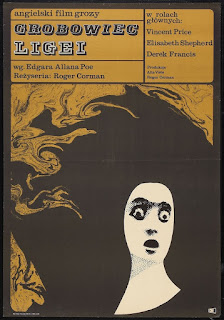- The Polish film poster is artist-driven, not studio-driven. It is more akin to fine art than commercial art. It is painterly rather than graphic. What sets the Polish poster apart from what we’re used to see in the West is a general disregard for the demands of the big studios. The artists requested and received complete artistic freedom and created powerful imagery inspired by the movies without actually showing them: no star headshots, no movie stills, no necessary direct connection to the title.
- They are in this regard similar to the work of Saul Bass, a rare example of a Hollywood artist who enjoyed total freedom from the studios. Next to a typical Hollywood film poster with the giant headshots of the latest movie star and the title set in, you guessed it, Trajan Pro, the Polish film poster still looks fresh and inspiring today.
- In the Cold War era the vitality of the Polish Poster School attracted international attention and admiration. Although state controlled, the posters—which are characterized by sophisticated imagery and surreal tendencies—often carried powerful, oblique commentaries on the designers’ political surroundings.
- Beginning in the 1950s and through the 1980s, the Polish School of Posters combined the aesthetics of painting with the succinctness and simple metaphor of the poster. It developed characteristics such as painterly gesture, linear quality, and vibrant colors, as well as a sense of individual personality, humor, and fantasy. It was in this way that the Polish poster was able to make the distinction between designer and artist less apparent.
- Posters of the Polish Poster School significantly influenced the international development of graphic design in poster art. Their major contribution is in their use of the power of suggestion through clever allusions. Using strong and vivid colors from folk art, they combine printed slogans, often hand-lettered, with popular symbols, to create a concise inventive metaphor. As a hybrid of words and images, these posters created a certain aesthetic tension.
- In addition to aesthetic aspects, these posters were able to reveal the artist's emotional involvement with the subject. They did not solely exist as an objective presentation, rather they were also the artist's interpretation and commentary on the subject and on society.




























































